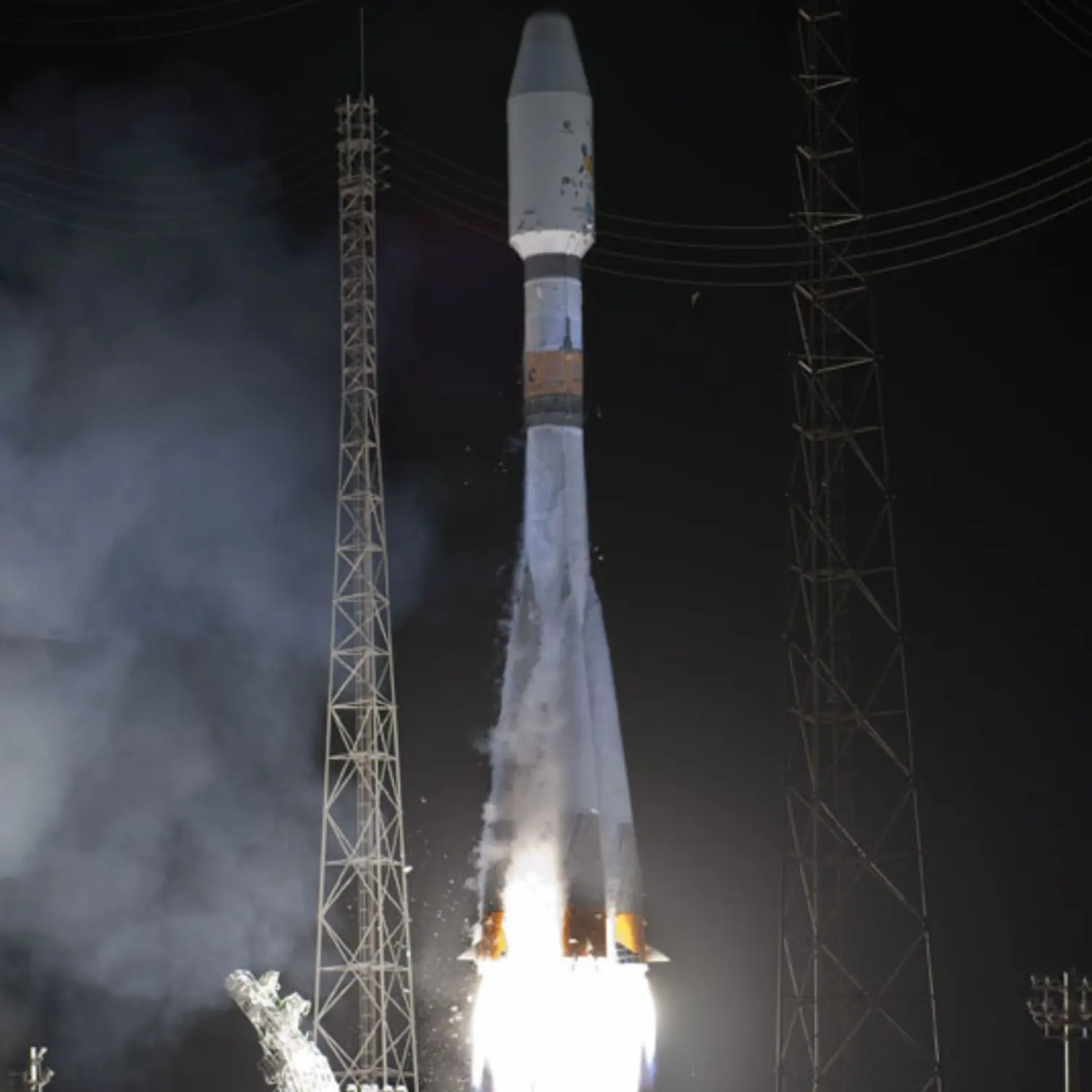Pléiades 1A, SSOT, Elisa
Launch Success
Liftoff Time (GMT)
02:03:48
Saturday December 17, 2011
Mission Details
Read Article
Launch Notes
First flight of Soyuz ST-A. Flight VS02.
Pléiades 1A
Pléiades is the CNES (French national space agency) program designed as the follow-on to its highly successful Spot series of low Earth orbit (LEO) multi-mission observation satellites, which has operated an uninterrupted service since 1986. The Pléiades-HR satellites are the high-resolution optical imaging component of the French-Italian Orfeo system, for which Italy is supplying the COSMO-Skymed radar component. The ground resolution of the HiRI (High-Resolution Imager) will be 70 cm across a 20 km swath, while a very high degree of agility will allow them to acquire several images successively along track or off track, for mosaicking of ground scenes. The onboard storage capacity has been increased to 600 gigabits and the downlink data rate to 450 megabits per second.
Sun-Synchronous Orbit
1 Payload
970 kilograms
SSOT
Astrium signed in August 2008 a contract for the development of the SSOT system (Sistema satelital para Observación de la Tierra). SSOT comprises one high-resolution Earth observation satellite and associated ground segment, a complete partnering and training programme, and the satellite launch planned for early 2010. The SSOT high-resolution Earth observation satellite will be designed, built, integrated, and tested by Astrium. The SSOT programme also includes the development and setting up of a ground control segment and image processing facilities enabling the satellites to be directly operated and controlled from Chile by the Chilean authorities. The cooperation agreement makes provision for Chilean engineers to work alongside the Astrium development team. They will be given intensive training in space technology and will participate directly in SSOT project development.
Sun-Synchronous Orbit
1 Payload
117 kilograms
Elisa
These are four microsatellites of 121kg each made by EADS Astrium on the basis of a platform Myriade for the account of the DGA. It is a demonstration mission to acquire a ROEM (Electromagnetic Origin Intelligence) operational capability. The four satellites are respectively called W11, E12, W23, and E24. They are in fact divided into two orbital planes: West (W) and East (E). The first digit refers to the frequency torque that is used (1 or 2) for telemetry and remote controls (TM / TC). The second digit indicates the frequency of X-band transmitters used for the mission. There are four separate frequencies so that the four satellites can operate simultaneously.
Sun-Synchronous Orbit
4 Payloads
484 kilograms
Rocket


Manufacturer
RKK EnergiyaPrice
$30.00 million
Rocket
Height: 46.94m
Payload to Orbit
LEO: 8,500 kg
GTO: 2,810 kg
Liftoff Thrust
4,317 Kilonewtons
Fairing
Diameter: 4.11m
Height: 11.43m
Stages
4
Strap-ons
4
Launch Site
Stats
Soyuz 2.1a
9th
Mission
3rd
Mission of 2011
RKK Energiya
194th
Mission
7th
Mission of 2011
2011
79th
Orbital launch attempt